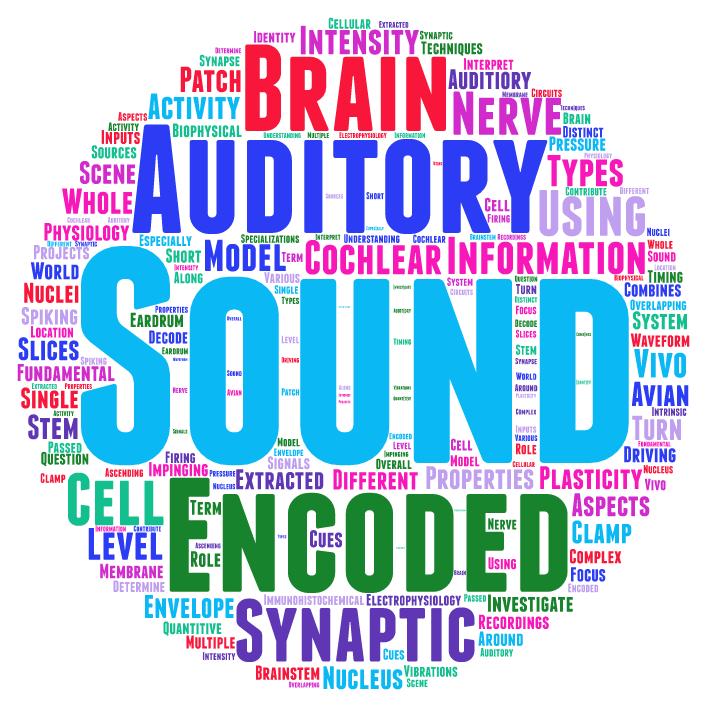
PLEASE NOTE: The lab is on hiatus due to loss of funding and the website is maintained for historical purposes only. See: Google Scholar profilefor updated publication list. There are no openings for research assistantships.
All information about an auditory scene combines to a single sound pressure waveform impinging on the eardrum. These vibrations are encoded as spiking activity in auditory nerve, which in turn projects to the cochlear nuclei in the brain stem. Our driving question is: how does the brain interpret this activity as the complex auditory world around us? And how do we do this especially when there are multiple overlapping sound sources?
At the level of the cochlear nucleus, different types of information are extracted by using distinct synaptic and cellular specializations that decode the nerve inputs. How are timing and intensity cues are extracted at the auditory nerve to cochlear nucleus synapse? How might short-term synaptic plasticity contribute to encoding sound envelope or overall level? What role do the various intrinsic firing properties of different cell types have in encoding sound envelopes? How is the information about intensity passed along by ascending circuits?
We investigate fundamental aspects of auditiory physiology using whole-cell patch-clamp recordings from brain slices, in vivo electrophysiology, quantitive modeling of synaptic plasticity and biophysical membrane properties, and immunohistochemical techniques.

